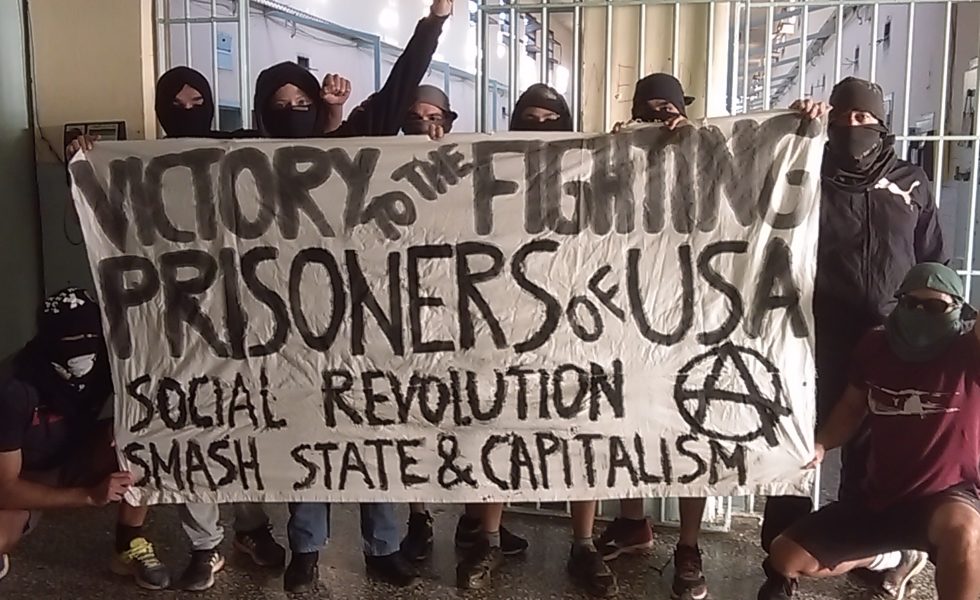Originally published at MintPress News.
AUSTIN, Texas — As hunger strikes and sporadic work stoppages continue at prisons across the country, the historic prison movement and the brutal retaliation inmates have faced because of it remain largely unreported in the mainstream media.
The media blackout continues even though tens of thousands of inmates are believed to have taken part in the ongoing strike, and a shift of guards at Holman Correctional Facility in Alabama also refused to work on Sept. 24.
“It’s interesting that the foreign press has been better to us,” said Azzurra Crispino, media co-chair of the Incarcerated Workers Organizing Committee, part of the Industrial Workers of the World union, which is supporting the strike. Inmates can join the IWW for free, regardless of their prison work status.
In an interview with MintPress News on Friday, Crispino noted that the strike has been covered extensively by the United Kingdom’s The Guardian and Russian state-owned media outlet RT, while the biggest voices in the U.S. media have been notably silent.
Adam Johnson, a media analyst from media watchdog Fairness and Accuracy in Reporting, or FAIR, has repeatedly commented on the mainstream media blackout on the strike via Twitter:
19 days into the largest prison strike in history and still no coverage from:
NYTimes
Washington Post
CNN
MSNBC— Adam Johnson (@adamjohnsonCHI) September 27, 2016
reminder: the Washington Post still hasn't covered the prison strikes pic.twitter.com/H30yY25w0K
— Adam Johnson (@adamjohnsonCHI) September 30, 2016
Crispino noted the media is ignoring the strike even while reviewing “13th,” a new documentary from Netflix which reveals how the 13th Amendment to the Constitution abolished slavery while legalizing the enslavement of prisoners. Although prison strikers are calling for reform of the 13th Amendment, mainstream media outlets including The New York Times and NBC News have ignored the strike in their reviews of the film.
“Realistically, a lot of the issue has been that the various state departments of correction are just denying what’s happening and news wants to be able to corroborate the story,” she told MintPress. “I hate to say it, but I think that a lot of these news organizations are more willing to take as authority what the prison officials are saying rather than the prisoners.”

Based on reports from prisoners, Crispino said that although work stoppages have continued unabated in some South Carolina prisons, most prisoners in other states are preparing for the next planned wave of work stoppages. Meanwhile, prisoners have reported instances of violent retribution from prison guards, who have allegedly physically attacked striking inmates or encouraged other prisoners to abuse strike participants.
Crispino said one Twitter account, @Prisonslavery1, appears to be relaying authentic reports of unrest from inside a South Carolina prison. Some of these reports have been verified by the IWOC, including the death of an inmate at McCormick Correctional Institution in McCormick, South Carolina, during strike-related unrest on Sept. 25. The account referred to this inmate’s death as murder.
Prisoner murdered family contacted by other prisoners to inform of murder. Prison officials still had not contacted his family. Smh!
— Prison slavery (@Prisonslavery1) September 27, 2016
FASCISM: No prisoner should be sanctioned for asking their friends to attend a Demonstration regarding Prisoners Human Rights.
— Prison slavery (@Prisonslavery1) September 27, 2016
Prisoners networking to take this struggle to abolish the 13th to the Whitehouse
— Prison slavery (@Prisonslavery1) September 29, 2016
While there have been reports of violence against guards, Crispino expressed frustration that that some local mediareports have focused on this while largely ignoring reports of violence directed against inmates.
Crispino said hunger strikes are also continuing, including Wisconsin’s Dying To Live movement, a group of prisoners demanding an end to solitary confinement. Solitary confinement remains widespread throughout U.S. prisons and jails, despite being repeatedly condemned as torture by the United Nations. Participating inmates have faced a dangerous force feeding regimen.
“There’s an elderly gentleman who has a heart condition, and it appears from reports I’m getting that there’s one guard who’s encouraging other inmates to beat and rape him,” she said of one hunger striker.
“The repression is very real.”